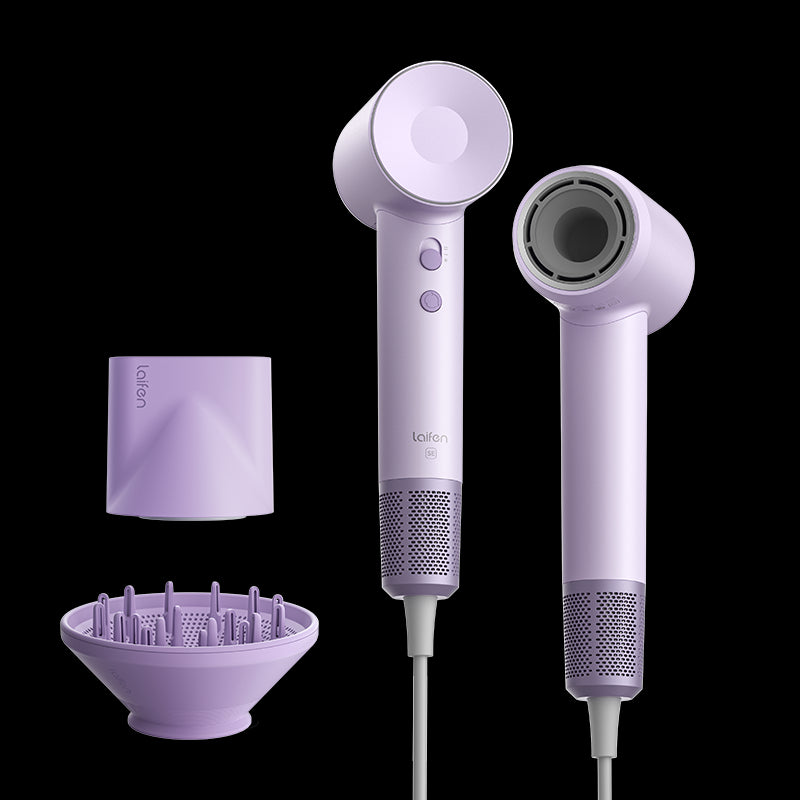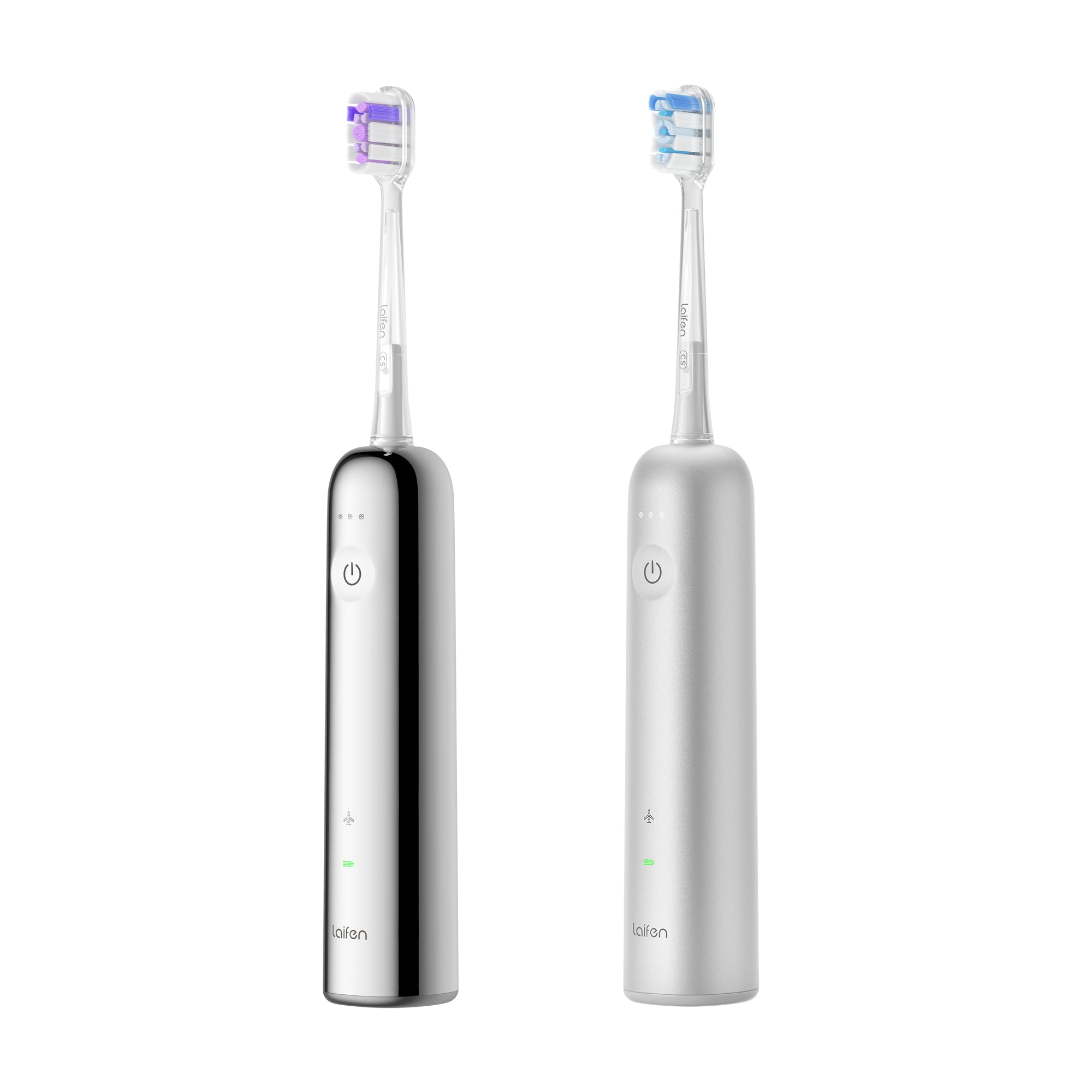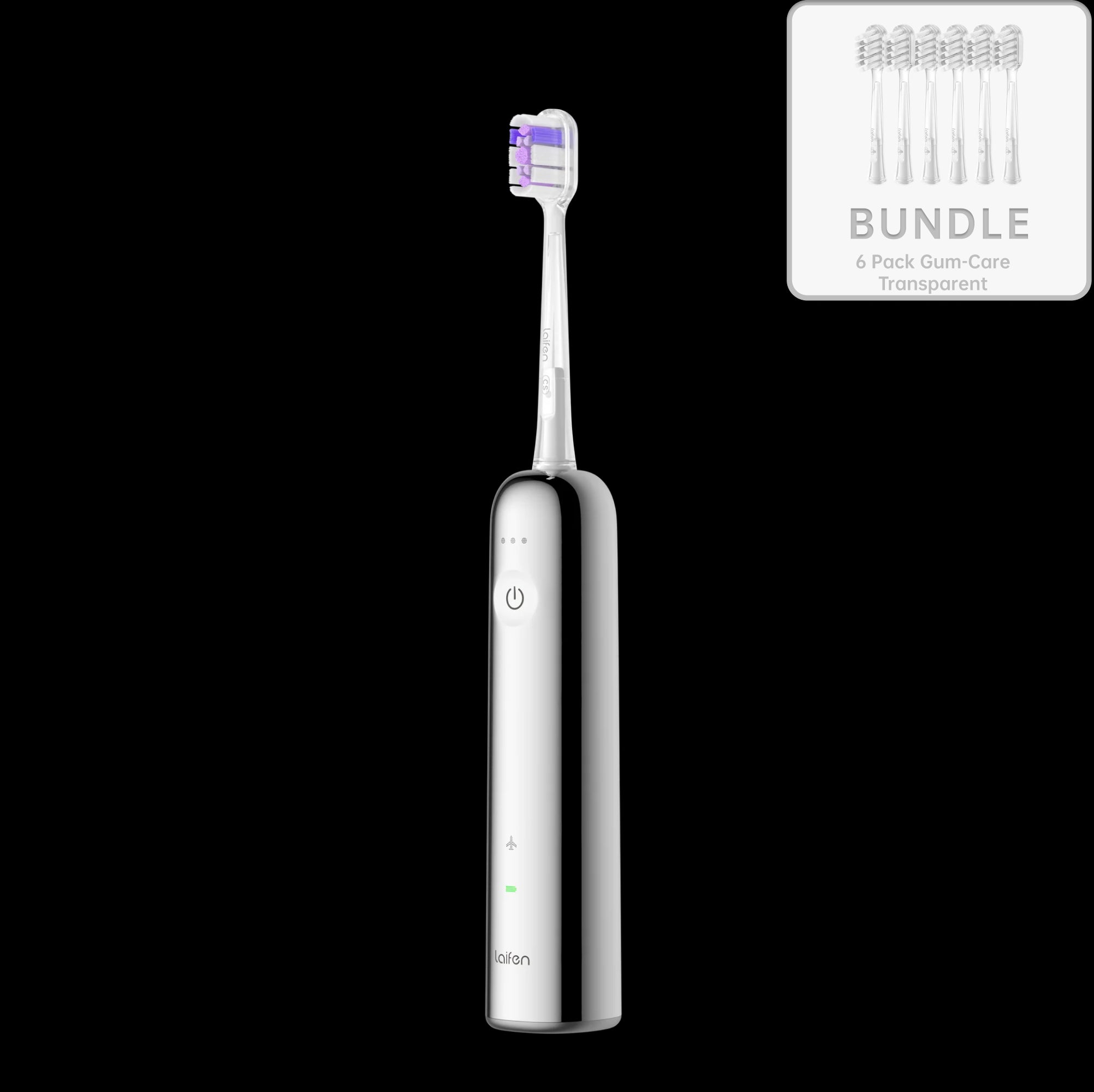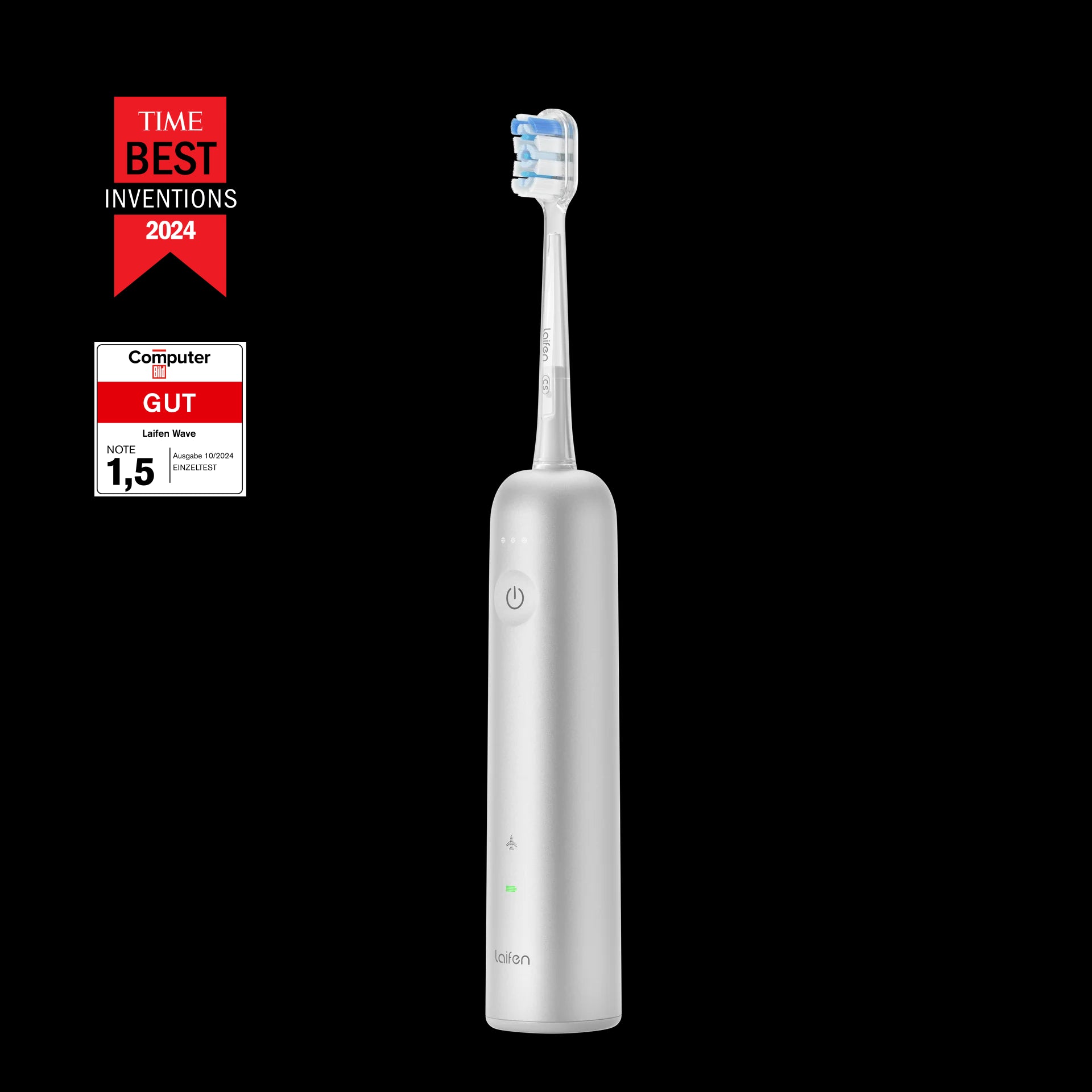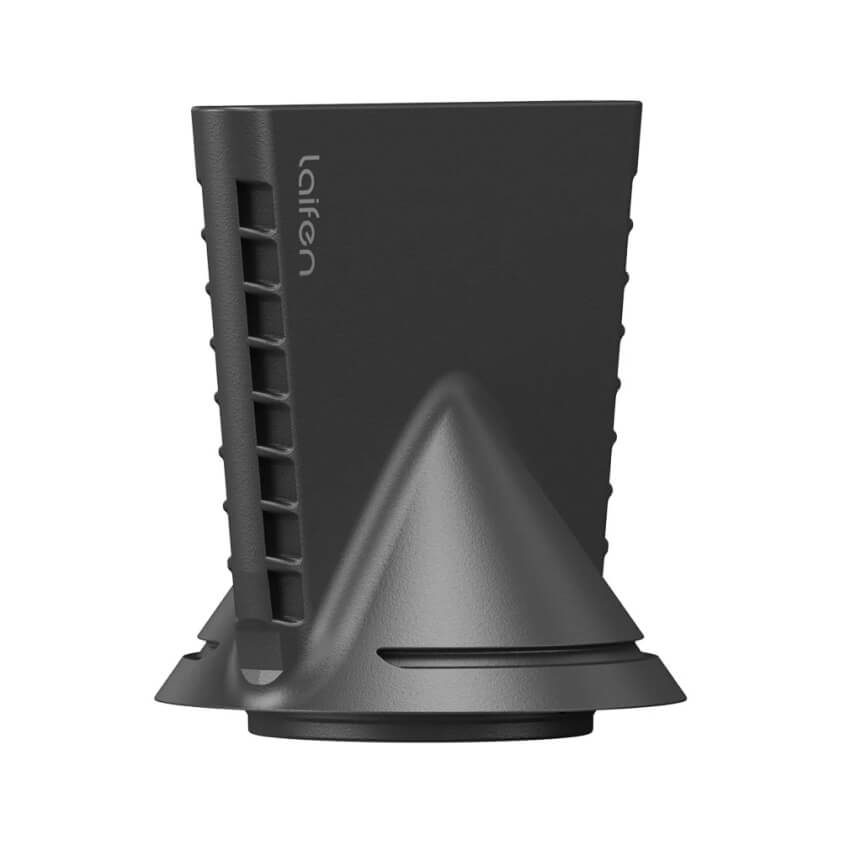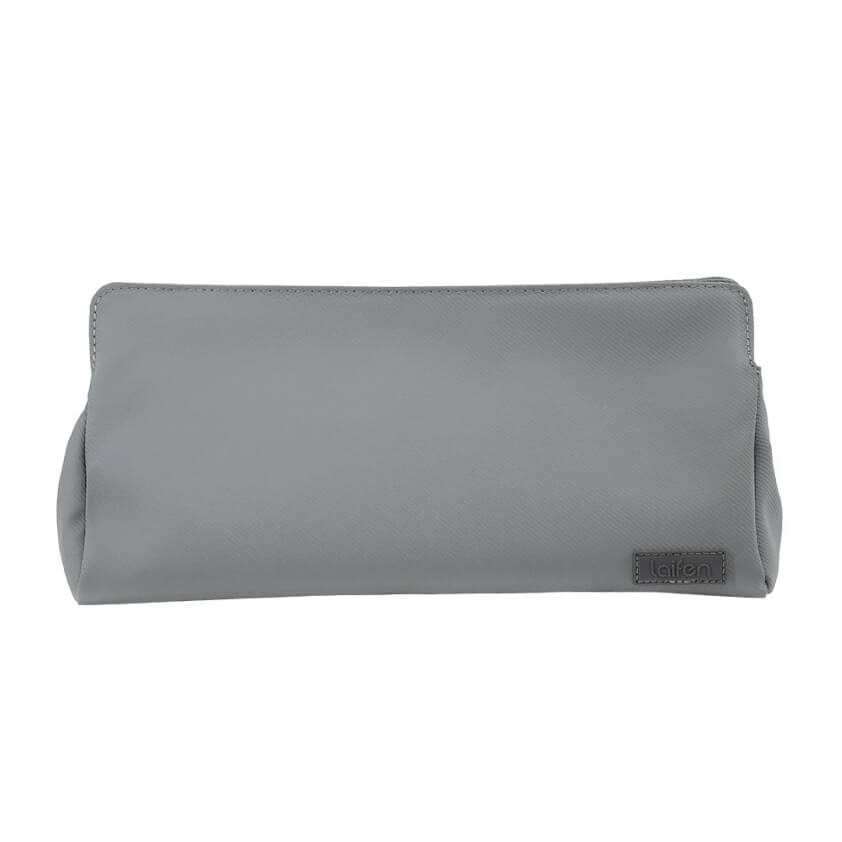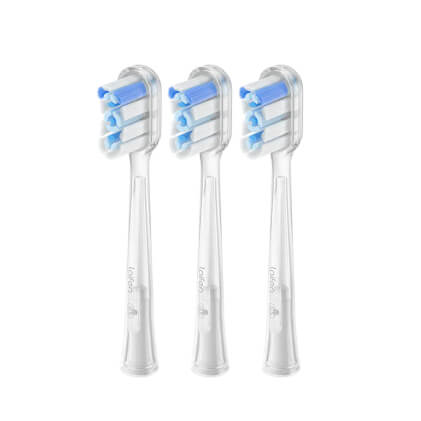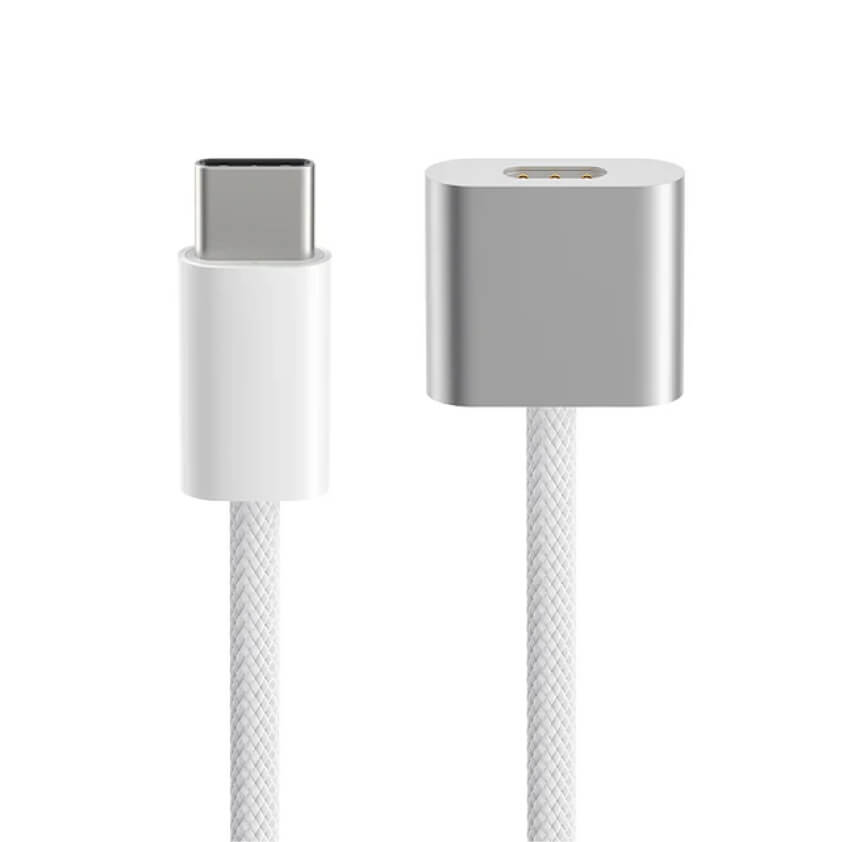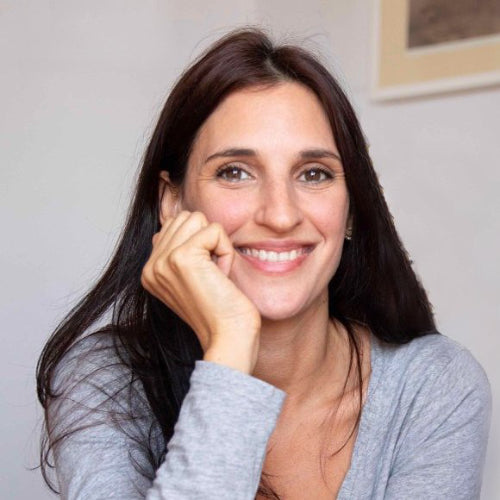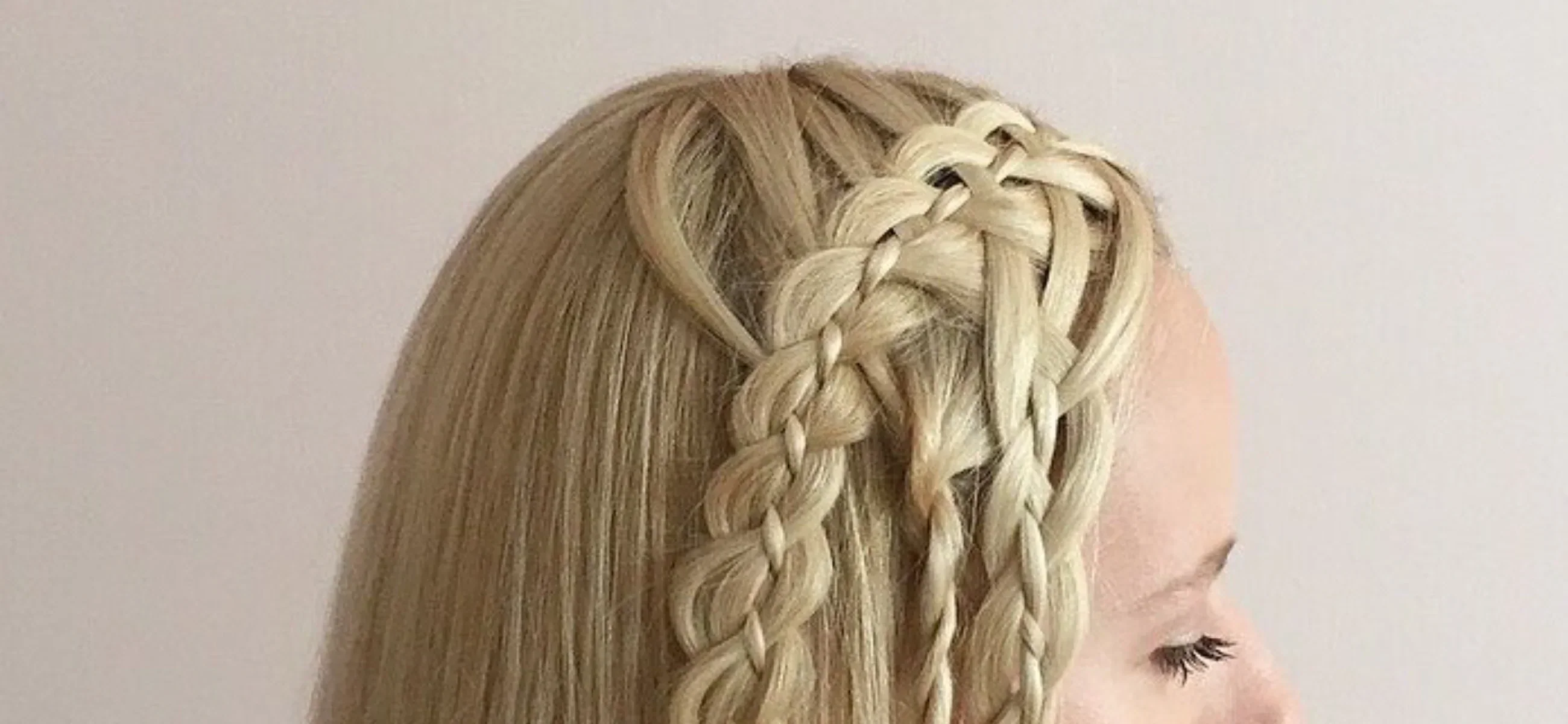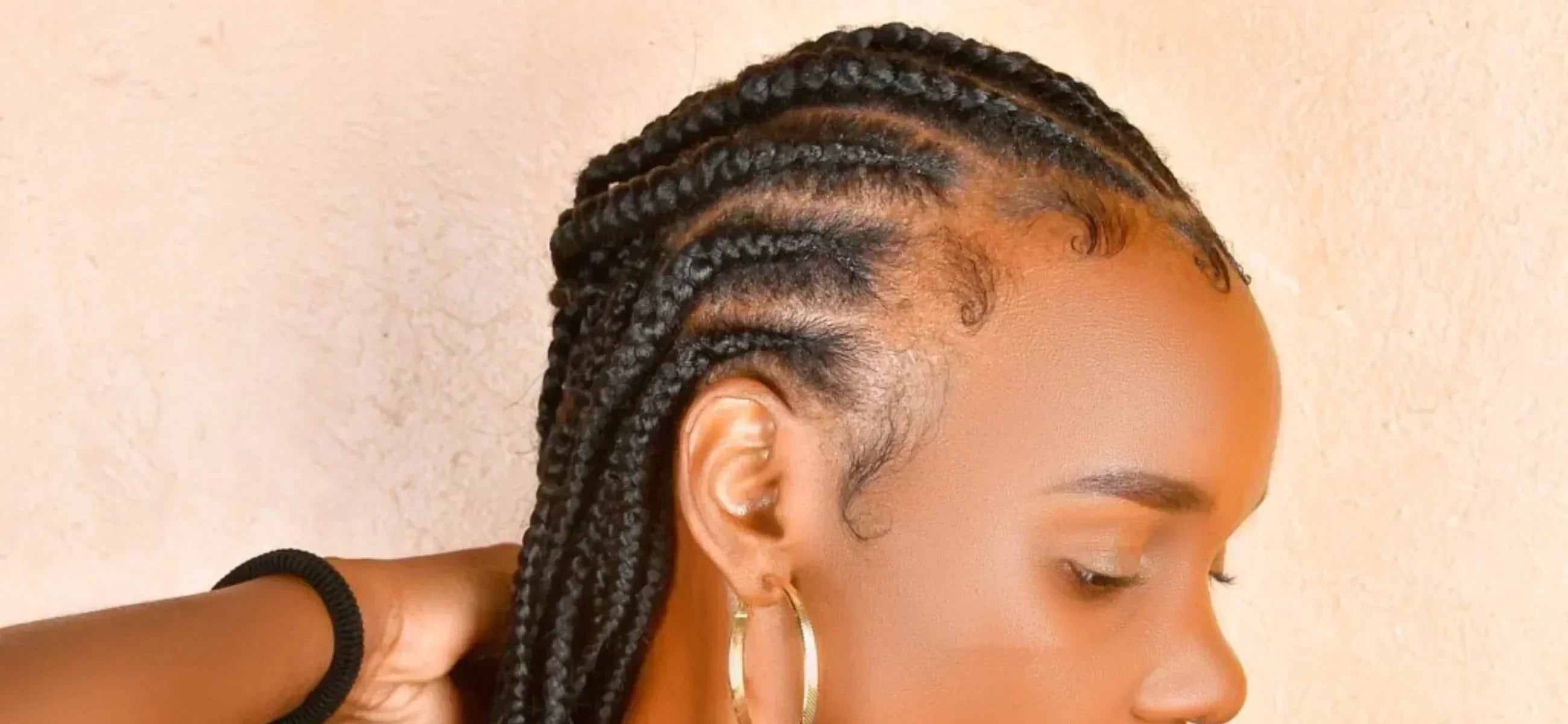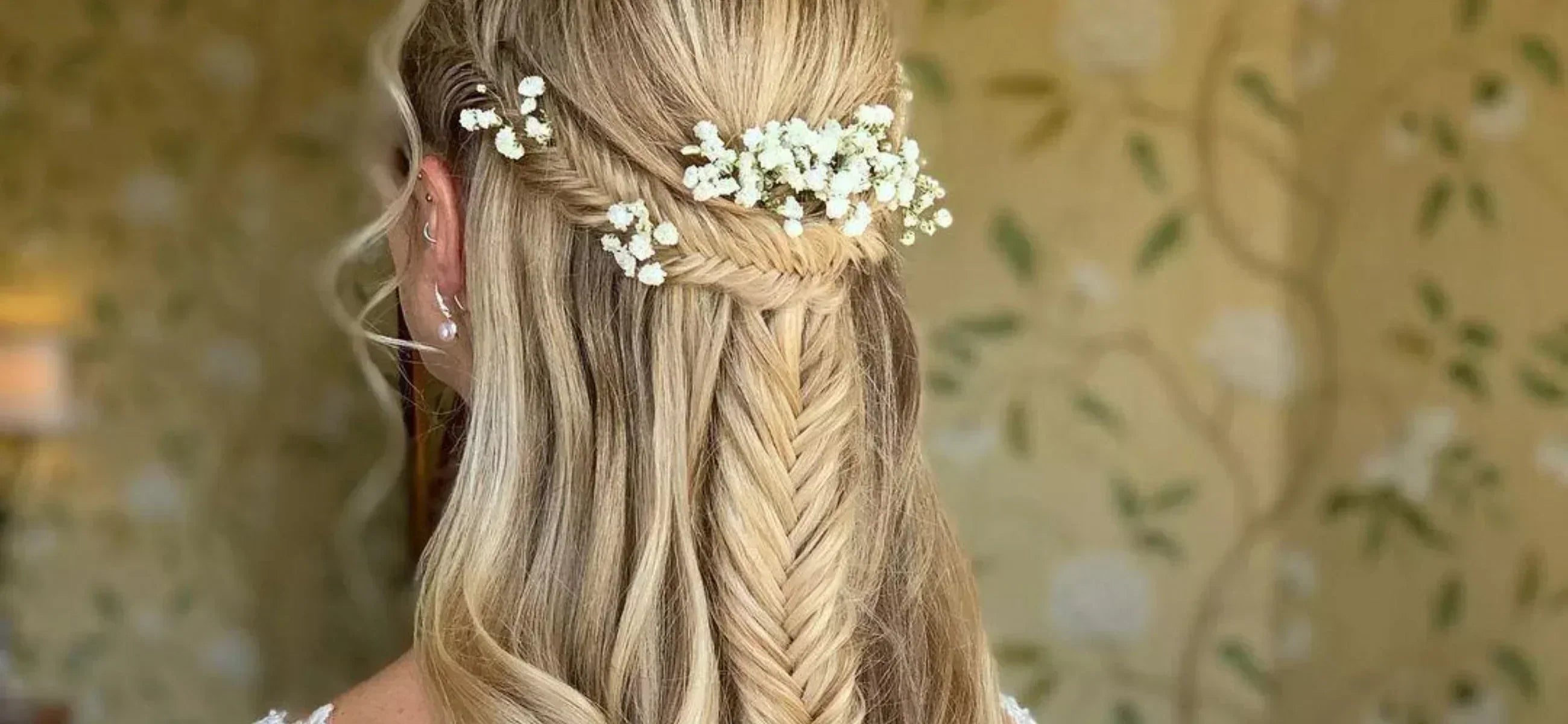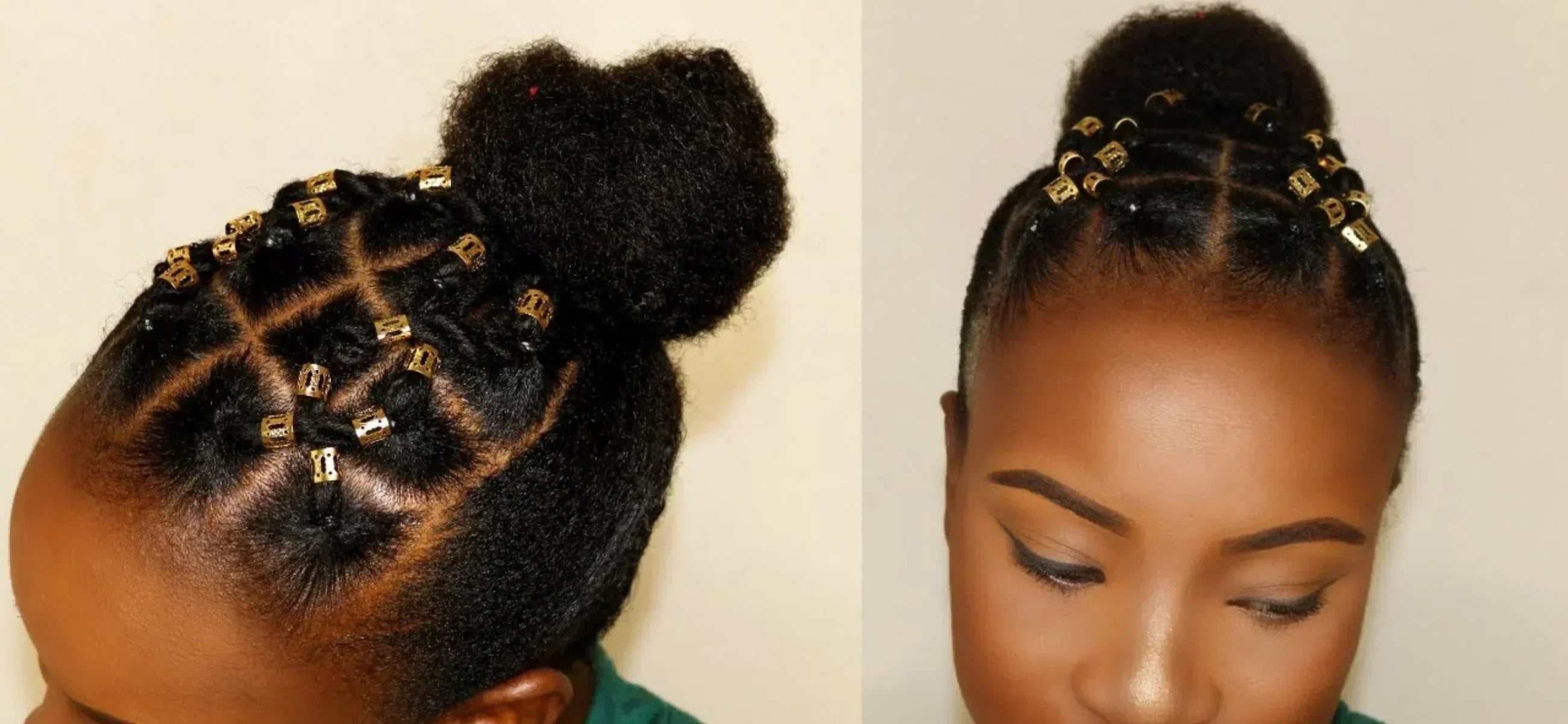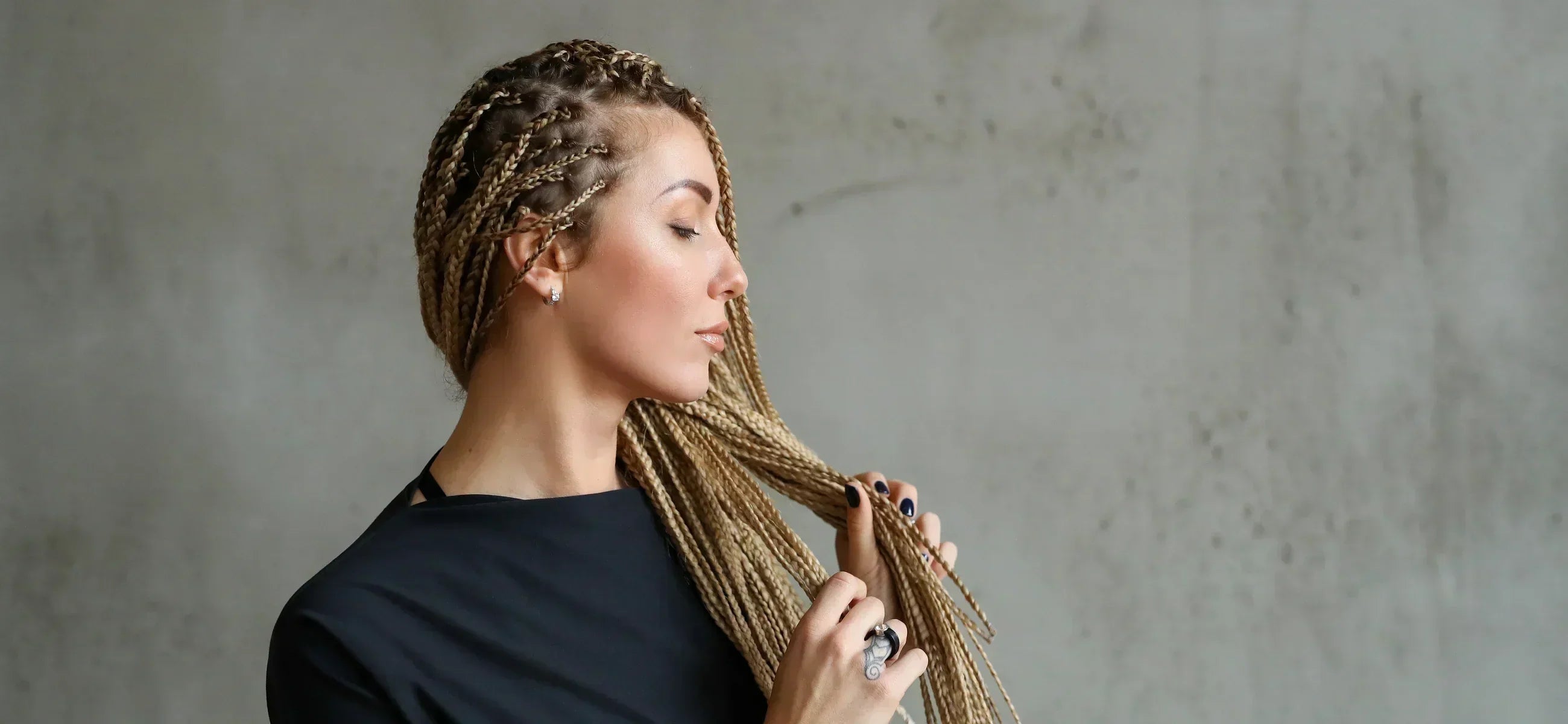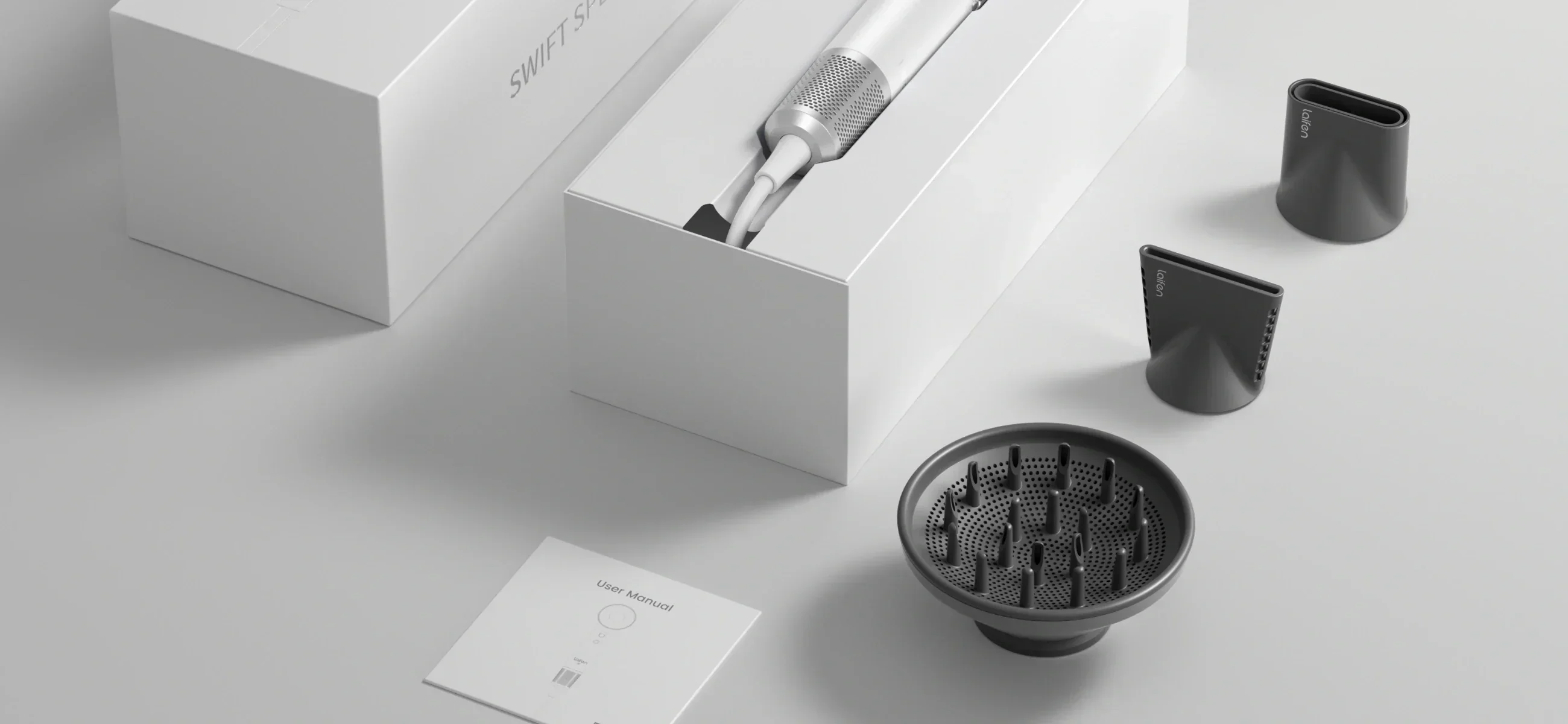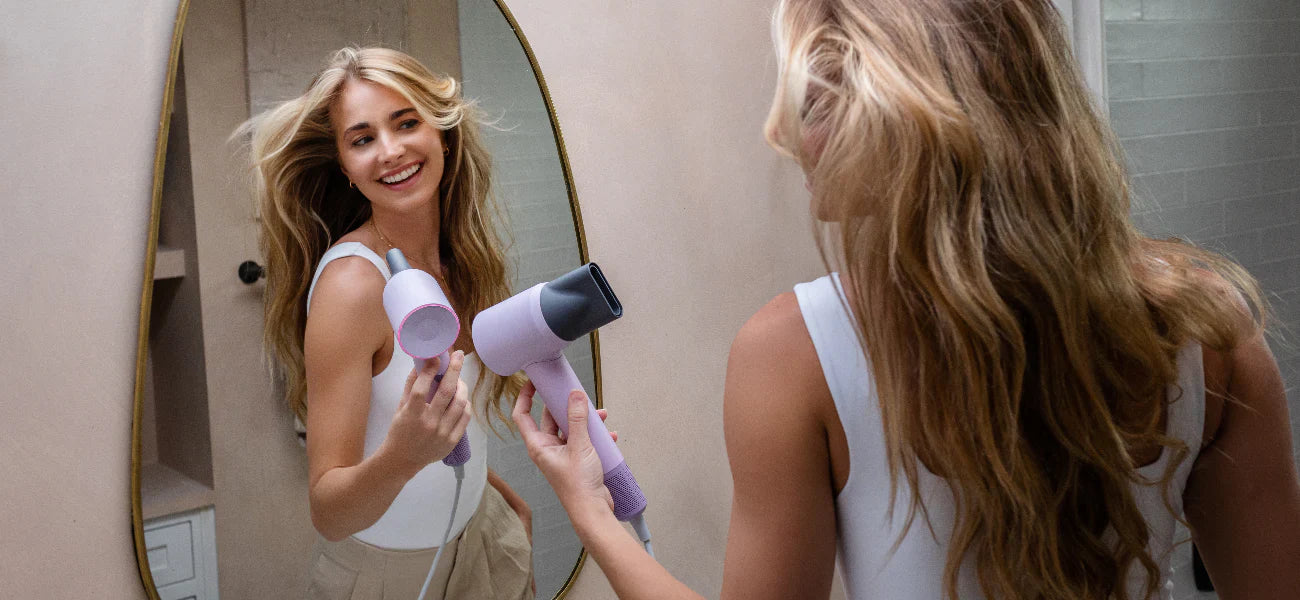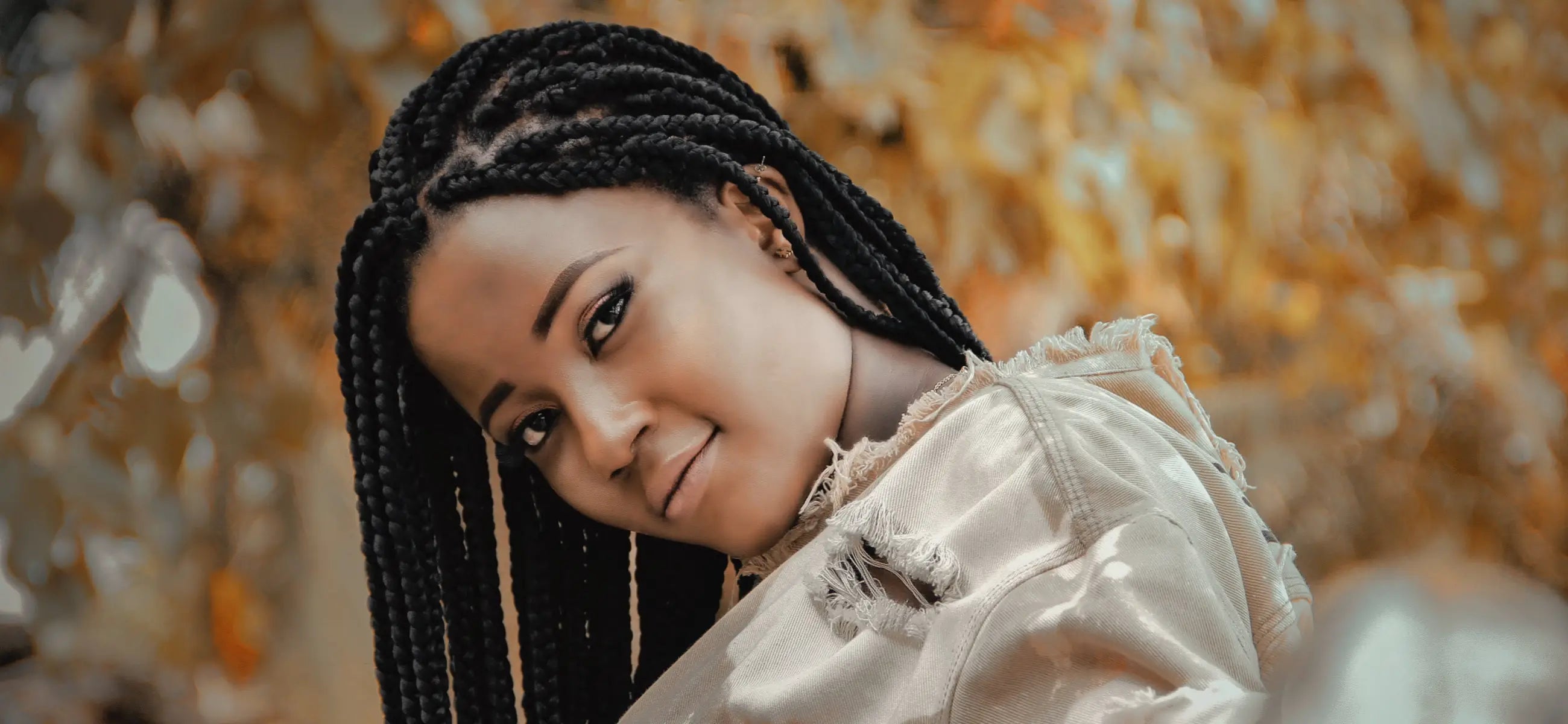
In this article
- 1. Box braids
- 2. Rope twists/Senegalese twists
- 3. Knotless braids or pop smoke braids
- 4. French curl braids/twists
- 5. Spring twists
- 6. Passion twists
- 7. Boho braids
- 8. Marley/kinky twists or tribal braids
- Conclusion
- 9. Lemonade braids
- 10. Goddess braids
- 11. Cornrow ponytail
- 12. Halo braid (or crown braid)
- 13. Fulani braids
- 14. Butterfly locs (braid-loc fusion)
- 15. Criss-cross braids
- Tips for braid hairstyle maintenance
- Conclusion
- FAQs
Braids are any hairstyle that is created by braiding three or more sections of hair. Interestingly, the term "braids" is also used in today's world to describe the entire category of braided hairstyles, which is why it is often used to describe two-strand twists and braided hair in general.
Braids come in different colours, lengths, sizes, and textures, so you just have to find the perfect style that suits you. But braids are not only a popular, modern style, they also have functional purposes. For example, braids can act as protection for your hair and give it a break from styling, a great thing when you have too much to do to deal with your hair or if it has been damaged in some way.
A complete review to the 15 best types of braids
There are many kinds of braids, like Bubble braids, Fulani braids or Goddess braids. No matter what your favorite is, let's look at some of the popular types of braids in modern culture:
1. Box braids

Box braids usually come to mind when braids are mentioned. Box braids involve dividing the hair into smaller sections of hair, often shaped like a square/box (hence the name), then adding braiding hair within a square to your own hair in 3 strands that are woven to the end.
This can be done in a range of different sizes, but if you want the most modern look, go for chunky braids or something smaller than medium size. These are probably the longest lasting braids on the whole list, so if you're looking for value for money, this is a good choice.
But what makes them so attractive is also their biggest drawback: box braids take some time to detangle. They are not as casual as Rope Twists and are therefore more common in the workplace.
2. Rope twists/Senegalese twists

When it comes to braids, this is the other typical style. For this, a section of hair is folded in half and each side is twisted around itself to pull it tight until each side is almost twisted around itself. Then the two strands are twisted around each other.
This is understandably difficult to visualize, but anyone watching a tutorial will understand exactly what is meant. Rope twists give a neat yet casual look, similar to the look of ropes on sailboats, and are perfect if you're looking for a style that's easy to undo.
To do this, open the end of the twist until you can grab both ends of the braiding hair and twist it in the opposite direction to the shape. This allows you to quickly untangle it to the end and the braiding hair can be easily separated from the hair.
3. Knotless braids or pop smoke braids

However, when we talk about trendy braids, this is one of the best hairstyles you can get. Knotless braids aren't particularly new but are making a comeback thanks to Gen-Z and TikTok, among many other trends from the 90s hip-hop era.
Knotless braids look similar to box braids, the main difference is the way braiding hair is added to your own hair. Whereas with box braids this is done directly at the root of your own hair and braided to the end, with knotless braids the stylist starts by braiding your own hair without extensions before adding small pieces of braiding hair to the desired volume of the braids.
Because of the technique involved in adding the braiding hair, knotless braids always look voluminous and are a great alternative if your hair is prone to breakage, you want to avoid the inconvenience of box braids, have a weak hairline, or live in a hot place.
4. French curl braids/twists

The main difference with French curl braids for men or twists is that the end of the braid is very loose. This gives the hairstyle a relaxed, romantic yet dapper look.
If you want to try something really fun this season, this should definitely be on your list. The big downside to this, however, is that the style often doesn't last very long. The ends, which initially look nice and fine, become a bit ragged as they become matted over time.
Admittedly, this happens with all braids after a long time, but French curls are particularly unforgiving due to their silky texture. Pro tip: Braids with a silky texture always last shorter than those with a wavy, twisted texture.
5. Spring twists
Spring twists have been all the hype over the last 2 years and if you've seen them, you'll understand why. Spring twists are one of the most relaxed braid hairstyles.
We'd say they're even more fantastic/romantic than French curl braids/twists. These braids get their name from the fact that when you pull them and let them go, the twists spring back up.
As you can therefore imagine, they can move beautifully when walking, running etc., which contributes to the charming, playful look. Spring twists require a particular type of hair with very tight, defined curls (what is now often referred to as "spring twist hair") and it needs to be twisted in a specific direction, usually to the right. Spring twists should only look slightly wild, but a clear braiding pattern should be recognizable.
6. Passion twists
Closely related to Spring Twists, Passion Twists are an even more relaxed style. These also look wonderful but in a less elaborate way. There are no clear braiding patterns with passion twists, but there are lots of little swirls along the entire length of the braids. This may not sound particularly attractive from the description, but once you see a picture of it, you'll realize how pretty they can be.
Passion Twists are achieved by silky extensions with a loose wave shape. This makes it different to the defined look associated with spring twists. Similar to French curls and spring twists, however, they don't last as long as the original box braids or rope twists. And the first part that tends to look a little rough is the ends, followed by the roots once the hairstyle grows out, especially if you don't have a silky hair texture.
7. Boho braids

Boho twists look very similar to passion twists but achieve this in a different way. Boho twists are simply normal box braids or rope twists with small, curly extensions hanging from the braids. So when you look at them, you see some of the braids and then some curly hair that continues organically throughout the hair. That's why it's such a beautiful but somewhat "unfinished" look.
So for these braids, you need 2 types of hair, normal braiding hair for the basic twists or braids and also extensions with a wavy or curly texture. And as you've probably already guessed, unfortunately, they don't last long.
The loose, curly pieces start to tangle and mat, making the hairstyle look less cute. The advantage, however, is that you can always cut off the curly hair and keep the basic twists or braids longer. This is great as it makes it easy to change the style as needed.
8. Marley/kinky twists or tribal braids

As the name suggests, Marley Braids look "frizzy" and similar to the hair texture that people of African descent often have naturally. If you have frizzy hair, these braids will look very natural on you.
Some people might even think that they were created without extensions, just with your hair. Marley twists are achieved by using extensions with a puffy, frizzy texture. These types of braiding hair are often called "Marley", "Jamaican Twist", "Afro Kinky", "Fluffy Kinky" and many more.
9. Lemonade braids
Ever since Beyoncé rocked them in her Lemonade album visuals, these side-swept braids have taken on a life of their own. Lemonade braids are essentially feed-in cornrows that curve to one side of the head while creating a sculpted look.
These braids can be thick, thin, long, or short, and they usually follow a curvy or geometric pattern that gives your scalp a little spotlight. Great for summer, performances, or when you just want your face to shine.
10. Goddess braids
If box braids are the reliable all-rounder, goddess braids are the divas of the braid world. These are raised cornrows that are larger than standard ones, usually styled into updos, buns, or halo crowns.
They exude elegance and have this regal presence about them. They’re also pretty fast to install and gentle on the scalp. Just don’t forget to lay those baby hairs for the full goddess effect.
11. Cornrow ponytail
This one’s for the folks who want practicality and beauty in one. A cornrow ponytail involves neatly braided cornrows pulled straight back into a high or mid ponytail. It’s a clean and structured look, but surprisingly low-maintenance.
If you want to give it an upgrade, use a high-speed dryer like the Laifen Swift Special before styling to stretch your hair without heat damage. The ponytail ends can be braided, curled, or left in natural texture for a fun contrast.
12. Halo braid (or crown braid)
This style wraps a single, continuous braid around your head like a crown, giving a soft, romantic look. It is one of the best braid hairstyles for weddings.
It works best on long hair (or with extensions), and it looks especially magical when some baby hairs or tendrils are left loose.
Bonus: It keeps your hair fully tucked away and is surprisingly durable for such a dainty style.
13. Fulani braids
Fulani braids are where culture meets artistry. Inspired by the Fulani people of West Africa, this style features cornrows that often start in the middle of the scalp and cascade down the sides.
They’re a form of self-expression. You can go simple or go dramatic, but there’s always a vibe of intentional beauty and history in every Fulani look.
14. Butterfly locs (braid-loc fusion)
Technically a loc style, but often braided to start, butterfly locs offer a messy, boho twist on traditional faux locs. These are done by braiding your natural hair or using extensions, then wrapping it loosely with water wave hair, creating that signature fluffy, “butterfly” finish.
15. Criss-cross braids
This style looks like it came straight from a braid puzzle where sections are parted and braided in overlapping, X-shaped patterns, often ending in a bun or ponytail. It’s a statement style, no doubt, and adds a futuristic, edgy touch to the traditional cornrow look.
Criss-cross braids are for when you want to stand out at a festival, event, or just because. Be prepared to get compliments (and a few “how did you do that?” questions).
Tips for braid hairstyle maintenance
Maintaining your braided hairstyle is caring for your natural hair underneath. With that in mind, here are four tips to keep your braids looking fresh and your hair thriving underneath.
Keep your scalp clean
It’s easy to forget the scalp when your hair is hidden, but clean roots are the foundation of healthy braids. Build-up from sweat, oils, and environmental debris can lead to irritation, flakes, and even odor if neglected. Use a light, no-rinse cleansing spray or diluted shampoo applied with a nozzle or cotton pad directly to the scalp. Pat dry with a soft towel and follow with a hydrating mist.
Dry smarter
After washing or sweating, it’s crucial to dry your braids thoroughly to avoid mustiness or mildew! Here’s where using a high-speed dryer makes all the difference. The Laifen Swift Special hair dryer is designed for power and precision, it combines fast-drying airflow with temperature regulation. It’s also lightweight for maneuvering around long or thick braided styles.
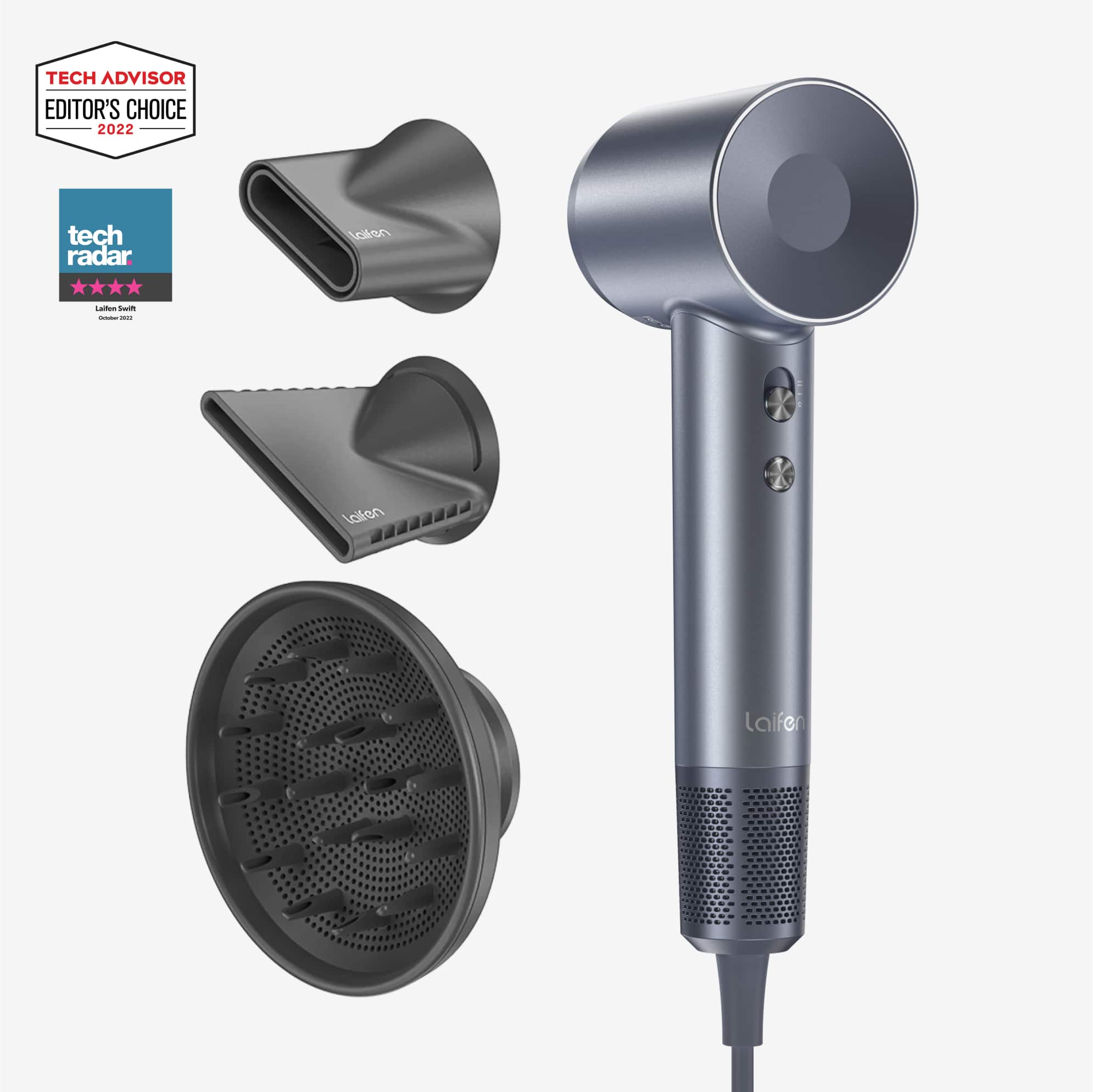
Laifen Swift Special · High-speed hair dryer (3 nozzles)
• Salon-quality finish – Ionic technology smooths and shines.
• Lightweight design – Easy handling for long sessions.
• Temperature control – Smart heat protects your hair.
• Low noise – Quiet motor for peaceful drying.
Wrap it up
Always wrap your braids with a satin or silk scarf or opt for a bonnet if your style is fuller. These fabrics reduce friction while you sleep, which helps keep the braided structure intact and prevents unnecessary dryness or breakage.
Moisturize the length
Many people focus on moisturizing the scalp, but the actual braid needs moisture too. Use a lightweight braid spray to hydrate the length of your braids, particularly where your natural hair ends inside the braid. Be careful not to oversaturate; a little mist goes a long way.
Conclusion
If you also wish you had braids, just look for "hair braiding near me." You will certainly have a number of options available to you here, as the range is constantly growing. As you can see from our article, there are many different types of braids. Before you decide on an option, we recommend that you take a close look at the advantages and disadvantages.
FAQs
Q1: What is the difference between plait and braid?
Honestly? Nothing major. “Plait” and “braid” are basically twins with different accents. In the UK and many parts of the world influenced by British English, people say plait to describe what Americans and others call a braid. So when your British friend says, “She wore her hair in a neat plait,” they’re talking about the same three-strand weave we all know and love. It’s more about geography than technique.
Q2: How to do a French braid?
The French braid is elegant, classic, and surprisingly beginner-friendly with a little practice. Here’s how it goes:
Step 1. Start at the crown with a small section of hair and split it into three equal strands.
Step 2. Begin a standard braid (right over center, left over center).
Step 3. Add hair as you go: Each time you cross a strand over, gather a little more hair from the sides into that strand before braiding it in.
Step 4. Continue this pattern down the back of your head.
Step 5. Once there’s no more hair to add, finish with a regular braid and secure it with a band.
Q3: How to do a fish braid?
A fishtail braid has this intricate, rope-like look, but it’s easier than it seems. Here’s the secret:
Step 1. Divide your hair into two sections, not three.
Step 2. Take a thin piece from the outside of the left section, cross it over, and add it to the right.
Step 3. Then do the same from the right side to the left.
Step 4. Keep repeating that process down to the ends.
Q4: What braids are suitable for weddings?
Weddings call for softness, structure, and a touch of magic, and braids deliver every time. Some favorites:
-
Crown braids: Wrap around the head like a floral halo.
-
Boho fishtails: Loose, side-swept, and full of romantic volume.
-
Braided buns: Tidy but textured, often paired with fresh flowers or delicate pins.
-
Dutch braids into updos: They pop outward, adding depth and drama.
Q5: What culture created braids?
The roots of braiding go deep. We’re talking over 5,000 years ago in Africa, where braided hairstyles were cultural, social, and even spiritual markers. In many tribes, the style of someone’s braid could reflect their age, status, marital status, or clan.
Braids then traveled, becoming a global phenomenon. Today, you’ll find traditional braiding in Greece, China, the Americas, and the Nordic regions, too. Each culture added its own unique twist (literally).
Q6: What do British people name braids?
As we touched on earlier, if you’re chatting about hair in the UK, just swap the word “braid” with “plait.” So what Americans call a “French braid,” the Brits would call a “French plait.” Same goes for fishtail plaits, Dutch plaits, and so on.
Fun fact: the term “braid” is gaining popularity globally thanks to social media, but “plait” still holds strong across Britain like a little linguistic braid of its own connecting past and present.


